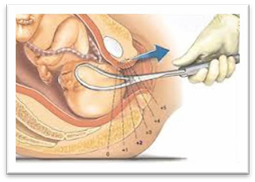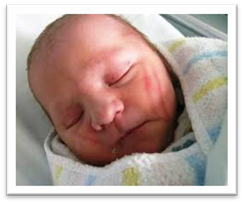Assisted birth and caesarean birth
Assisted birth – forceps birth
A doctor applies forceps, an instrument shaped like a pair of large spoons or ‘salad tongs’, to the baby's head to help guide the baby out of the birth canal. This is done during a contraction while you push.
Forceps birth and baby
What do I need to know?
- you may need an episiotomy
- if forceps birth fails, a caesarean birth might be needed.
Your baby may experience:
- minor marks on the face which are temporary
- minor facial injuries due to the pressure of the forceps
- temporary weakness in the facial muscles (facial palsy)
- minor external eye trauma.
Serious baby injuries after a forceps birth are rare but could include:
- skull fracture
- bleeding within the skull
- seizures.
More information:
- Queensland Clinical Guidelines parent information – Instrumental vaginal birth
- The Royal Australian and New Zealand College of Obstetricians and Gynaecologists (RANZCOG) – Assisted birth

